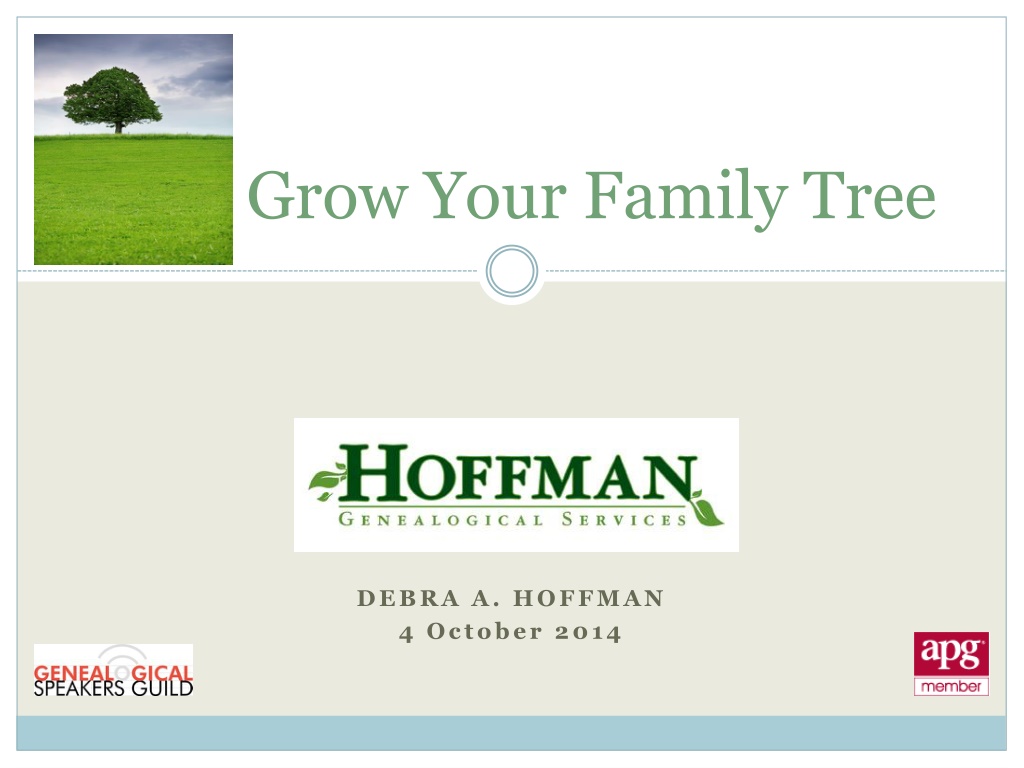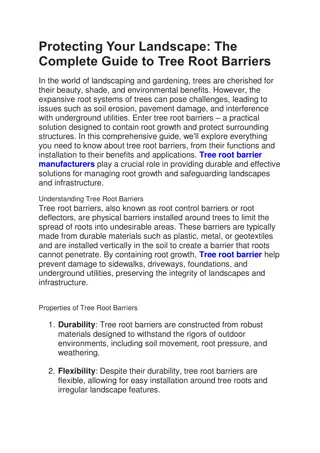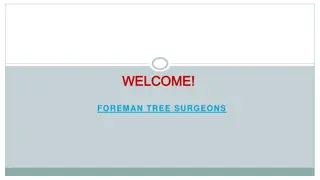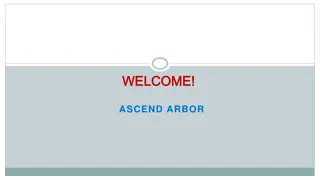Discover How to Grow Your Family Tree: A Step-by-Step Guide
Uncover the secrets of tracing your family lineage with this comprehensive guide. Learn the basic steps to kickstart your genealogical journey, starting from gathering information about yourself to interviewing family members and setting research objectives. Explore helpful tools like pedigree charts and family group sheets, and delve into locality and literature searches to expand your knowledge. Begin your quest to unravel your family's history today!
Download Presentation

Please find below an Image/Link to download the presentation.
The content on the website is provided AS IS for your information and personal use only. It may not be sold, licensed, or shared on other websites without obtaining consent from the author. Download presentation by click this link. If you encounter any issues during the download, it is possible that the publisher has removed the file from their server.
E N D
Presentation Transcript
Grow Your Family Tree DEBRA A. HOFFMAN 4 October 2014
Overview Basic Steps Maryland State Archives
5 Basic Steps 1 Start with what you know. 2 Identify a research objective. 3 Develop a research plan. 4 Execute the plan. 5 Analyze, evaluate and correlate the information.
Start with You! Write down what you know about: Gather the following information: Full Name Yourself Birth Date and Place Siblings Marriage Date and Place Parents Death Date and Place Military Service Grandparents Religious Affiliation Etc.
Interview Family Members Do they have: Citizenship Papers Bibles Fraternal Records Diaries and Journals Legal Papers Letters Military Records Memorial Cards and Funeral Newspaper Clippings Programs Occupational Records Birth, Marriage, or Death School Records Certificates Photo Albums Baptism Certificates
Family Group Sheet
Identify a Research Objective Choose an ancestor. Identify specific research objectives. Select one to begin. Usually you start with what you know and then work backward. Include name, time period, location and what information you hope to find.
Example Who was the father of William H. Weaver who was born 14 October 1827 in Germany?
Locality Search Learn about the locality. Identify available resources.
Literature Search Determine what research, if any, exists: Printed family histories and genealogies Family information published in periodicals Biographies Local histories Manuscript collections of family information Computer databases of family information Online family trees Etc. Saves time and can provide clues
Research Plan What sources will provide direct or indirect evidence? Where are those sources located? Search broad time periods. Check for collateral relatives and variant spellings.
Background Information Identify your objective Identify the name, date, place and any other identifying characteristics Surname variations Identify starting information Identify limitations Time Analysis of what is known Identify gaps in information Highlight clues
Identify Repositories Public Libraries Library of Congress DAR Library Family History Library Maryland Historical Society Enoch Pratt Free Library George Peabody Library at Johns Hopkins University County Public Libraries
Identify Repositories Courthouses Family History Centers State and Federal Archives Maryland State Archives, Annapolis State Libraries Maryland State Law Library, Annapolis
Identify Records Census Federal and State Vital Records Birth, Marriage and Death Land Records Federal and Local Church Records Court Records Probate Etc.
Findings List the repositories you visited. List the resources you used. Cite your sources! List negative findings. Discuss any problems encountered. Take full research notes. Separate comments from the record.
Research Log Prevent brickwalls. Use one of these to prevent duplication of work. Foster accuracy by tracking what you have searched and the results.
Next Steps? What clues did you find? What other sources should you research?
Evidence Analysis Ask Questions: Does it correlate with what you already know? Did you find what you were looking for? Is the information complete? Does it conflict with other information?
Evidence Analysis Organize it in a systematic way Timelines Charts Software
Cautions! Just because it is published in a book or on the Internet does not mean it is true! Don t incorporate information into your family tree until you verify it. Use original records, if possible.
Fannie Langdons Obituary Who Was the Informant? Provided an Erroneous Age was actually 60
Maryland State Archives Public Records from 1634-1789 Original state and county records Microfilm of original records Federal censuses Church records Land records Maps & Atlases Vital records
Beginners Guide Repository for all permanent records Municipal county, and State government Special Collections Church records Newspapers Maps Manuscripts Photographs
Online Resources Reference & Research Research at the Archives How to Find Specific Records Indices Found at MSA Guide to Government Records Introduction to Guide to Government Records Understanding Maryland Records
Need Help? MSA Help Desk msa.helpdesk@maryland.gov
Thank You! QUESTIONS?























